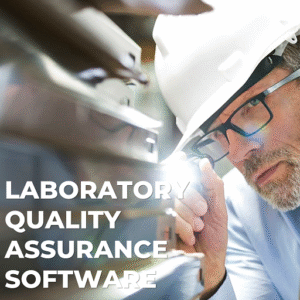How LIMS Software Improves Efficiency in Quality Control Labs

Introduction
In the high-pressure environment of modern quality control (QC) labs, accuracy and speed are non-negotiable. Laboratories face mounting challenges—from tighter regulatory compliance and rising sample volumes to growing data complexity. In this context, Laboratory Information Management System (LIMS) software has become a vital tool for streamlining processes, reducing errors, and improving overall efficiency. By automating workflows, centralizing data, and facilitating real-time monitoring, LIMS software allows QC labs to meet demanding timelines without compromising quality.
In fact, LIMS software improves efficiency in quality control labs by transforming the way labs handle data, track samples, and ensure regulatory compliance.
Centralized Sample Tracking and Management
One of the most time-consuming aspects of QC operations is tracking and managing samples manually. LIMS software automates this process with features like:
-
Barcode labeling and scanning
-
Real-time sample status updates
-
Chain-of-custody documentation
-
Automated sample scheduling
These functions eliminate manual log entries, reduce mix-ups, and significantly cut the time spent on locating or retrieving sample information.
Streamlined Data Entry and Integration
Data transcription errors are common in manual systems, especially when handling large volumes of test results. LIMS software integrates seamlessly with lab instruments, enabling:
-
Automatic data capture from analytical devices
-
Standardized data formatting and validation
-
Fewer manual entry tasks
-
Faster turnaround of results
This not only improves accuracy but also ensures consistency across multiple lab locations and teams.
Automated Workflows and SOP Enforcement
LIMS can map out and enforce Standard Operating Procedures (SOPs), ensuring all lab personnel follow consistent steps for each analysis. This includes:
-
Predefined workflows for specific tests
-
Auto-routing of samples to appropriate analysts
-
Built-in approvals and checkpoints
-
Alerts and escalation triggers for deviations
By embedding SOPs into automated workflows, labs minimize process variation and improve turnaround time.
Real-Time Dashboards and Analytics
Having a central view of lab operations is critical for managers aiming to optimize resource allocation and performance. LIMS platforms offer real-time dashboards that display:
-
Sample backlog and workload distribution
-
Lab personnel productivity metrics
-
Test result summaries and approval status
-
Instrument usage and downtime
These insights help lab managers make quick, informed decisions, allocate resources efficiently, and address bottlenecks proactively.
Compliance and Audit Readiness
Quality control labs often operate under strict regulatory frameworks such as ISO/IEC 17025, FDA 21 CFR Part 11, or GLP. LIMS software ensures compliance by:
-
Maintaining audit trails of all actions
-
Managing electronic signatures
-
Storing calibration and maintenance records
-
Generating traceable reports and certificates
This not only reduces the effort needed during inspections but also builds trust with clients and regulatory authorities.
Improved Collaboration and Data Accessibility
LIMS centralizes data in a secure cloud or local server, making it easier for multiple teams and departments to collaborate. It enables:
-
Remote access for off-site teams
-
Instant sharing of test results with stakeholders
-
Secure data exchange with clients or regulatory bodies
-
Version-controlled document management
This accessibility accelerates decision-making and enhances communication across the organization.
Reduced Operational Costs
While LIMS software is a significant investment, the return on investment (ROI) is high when considering the cost savings from:
-
Reduced errors and rework
-
Lower paper and storage costs
-
Less time spent on repetitive tasks
-
More efficient use of personnel and lab instruments
Over time, these savings translate into higher profitability and greater process scalability.
Scalability and Customization
As QC labs grow or diversify their testing capabilities, their systems must scale accordingly. Modern LIMS platforms are customizable and modular, offering:
-
Easy addition of new test methods
-
Multi-site management capabilities
-
User role-based access controls
-
Integration with ERP and QA systems
This flexibility supports long-term digital transformation and growth.
Conclusion
LIMS software improves efficiency in quality control labs by automating key processes, reducing manual intervention, and providing real-time oversight of lab operations. From tracking samples to generating audit-ready reports, LIMS platforms empower laboratories to operate faster, smarter, and with greater consistency. In a competitive market where quality, speed, and compliance define success, investing in a robust LIMS solution is no longer optional—it’s essential.
QHSE SOFTWARE SOLUTION
Laboratory Quality Assurance Software
QC Plans of Laboratory Quality Assurance Software
Features of Laboratory Quality Assurance Software
Benefits of Laboratory Quality Assurance Software
Support for Laboratory Quality Assurance Software
FREE demo of Laboratory Quality Assurance Software
CONTACT
Akshar Management Consultant
+91-9909979870
